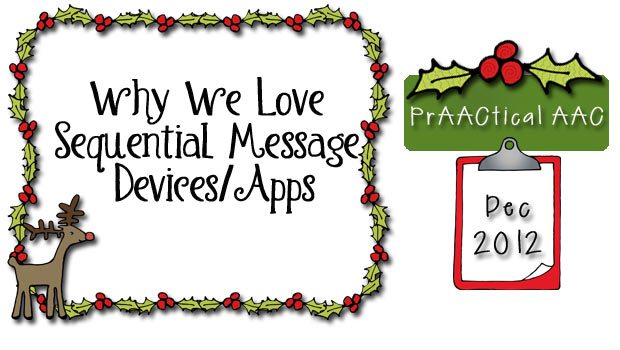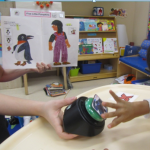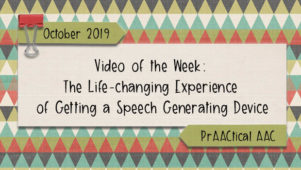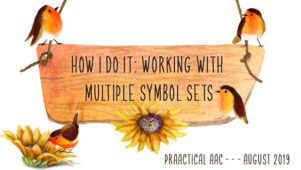Why We Love Sequential Message Devices/Apps

Earlier this fall, I spoke with an SLP who was beginning to serve a new classroom of students with significant disabilities, including many kids with AAC needs. Jenna had been into the classroom a few times to meet the teacher and the kids, and get a sense of the daily schedule, curriculum, and materials. She was (rightfully) concerned about how few AAC materials were available and we strategized a little bit about a long-range plan to address that. In the short term, though, we decided to focus on what they DID have in that classroom. Among the treasures, a sequential message communication device.
What Are Sequential Message Communication Devices?
These are simple devices that let you record messages in segments and then replay them in that same order. The initial activation of the device speaks the first part of the message aloud and then stops. When you activate the device again, it plays the second part. And so on.
Some sequential message communication devices have an added feature that make them even more valuable in the busy classroom: different levels. Communicators with this feature allow us to pre-record several sequences and switch to the appropriate level when needed. For example, level 1 might have a greeting routine, level 2 might have parts of the pledge of allegiance, level 3 might have messages for the daily meeting/sharing time, and level 4 might have lines to a story that the class is reading. The aide or teacher would just switch to the next level at the appropriate time so that the student could say that set of sequenced messages. Easy, flexible, and prAACtical.
What Are the Advantages of Sequential Message Communication Devices?
What are Some Commonly Used Sequential Message Devices?
These have been around for a long time and there are several companies that make them. (Bonus points for anyone reading this who remembers the making sequential message devices out of loop tapes for a phone answering machine, a tape recorder, and a PowerLink (AbleNet). More recently, there have been a few apps for mobile devices designed expressly for this purpose, such as TapSpeak Sequence. In addition, almost any SGD or AAC app can be configured to act as a sequential message communication device with just a bit of programming that any professional or family can do. Each one varies in terms of its characteristics, such as the length of recording time and availability of different levels. Need more specific information? This document by the Georgia Project for AT is an excellent resource for comparing device features.
- BIG and LITTLE Step-by-Step Communicators
- StepPad (Attainment)
- Partner/Plus Stepper (AMDi)
- Sequencer (Adaptivation)
- Step Talking Sequencer (Enabling Devices)
How Can They Be Used?
There are so many ways to use these because of their inherent flexibility. We’ve talked about using these to build interaction with jokes. Here are some great posts from other bloggers with suggestions for going way beyond that.
- 101 Curriculum Ideas: Teaching Learners with Multiple Special Needs has some fantastic ideas for using these to provide access to the curriculum
- Ideas for use in inclusive classrooms
We love the creative approach of teachers, SLPs, and parents who are determined to get a lot of mileage out of these little devices. Not only are they easy to use, but can make AAC functional and fun. If you’re using these in your clinical practice or classrooms, we’d love to hear about it.
Filed under: PrAACtical Thinking
Tagged With: implementation ideas, sequential message device, SGD
This post was written by Carole Zangari






2 Comments
Love this blog!
Thanks so much for stopping by! Would love your feedback, thoughts, and ideas. Bet there are lots of great prAACtical ideas out in your neck of the woods.